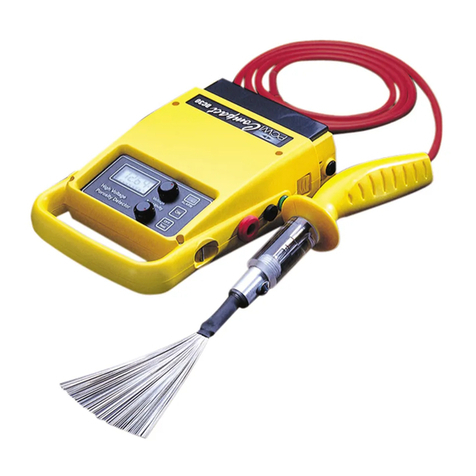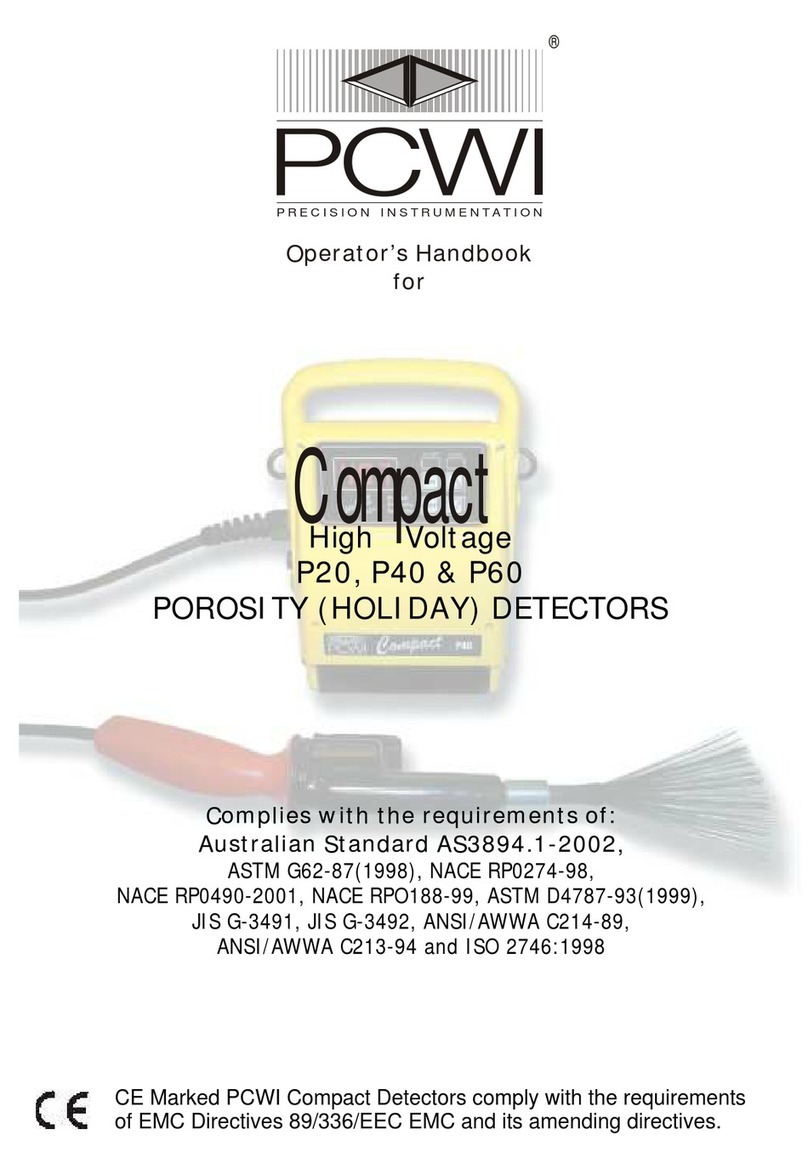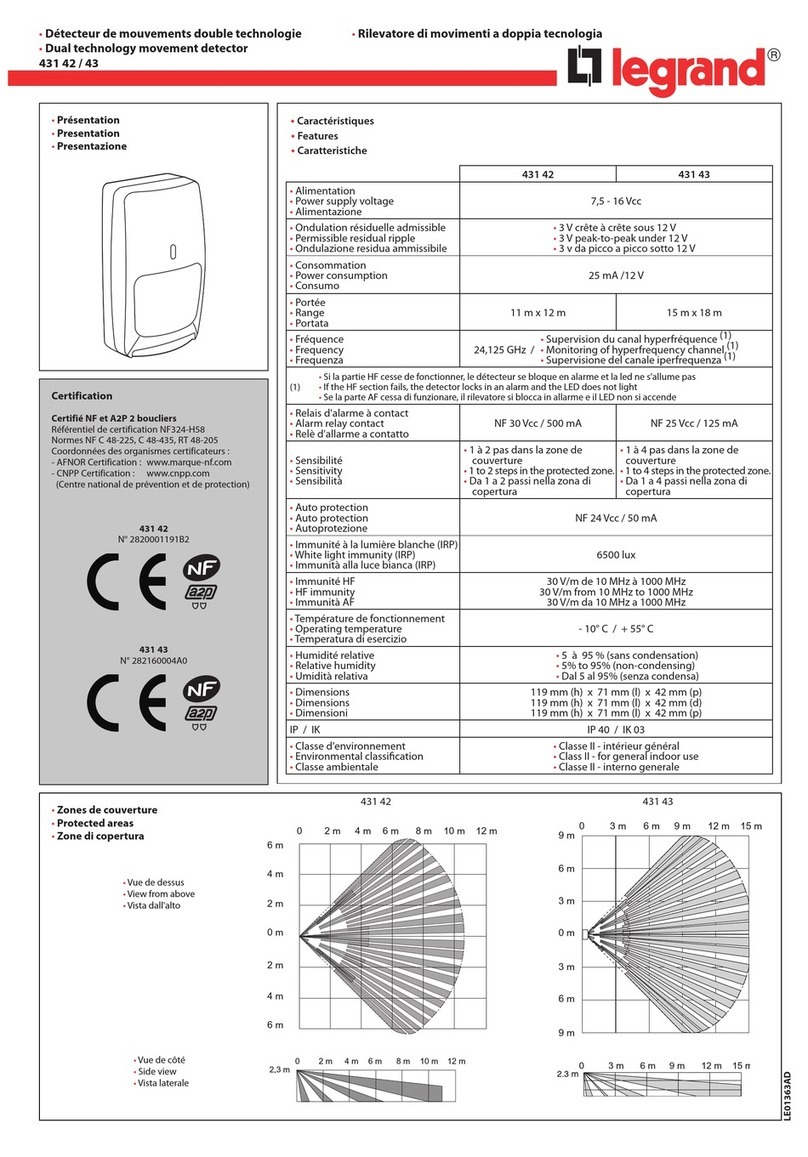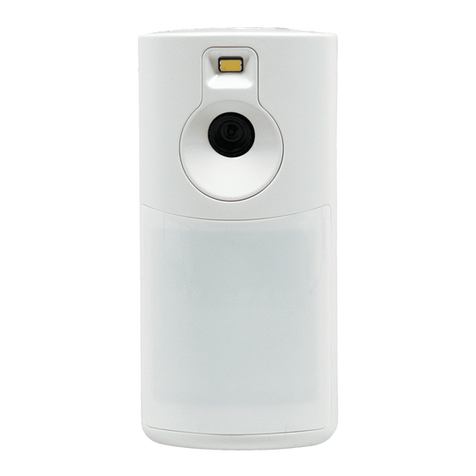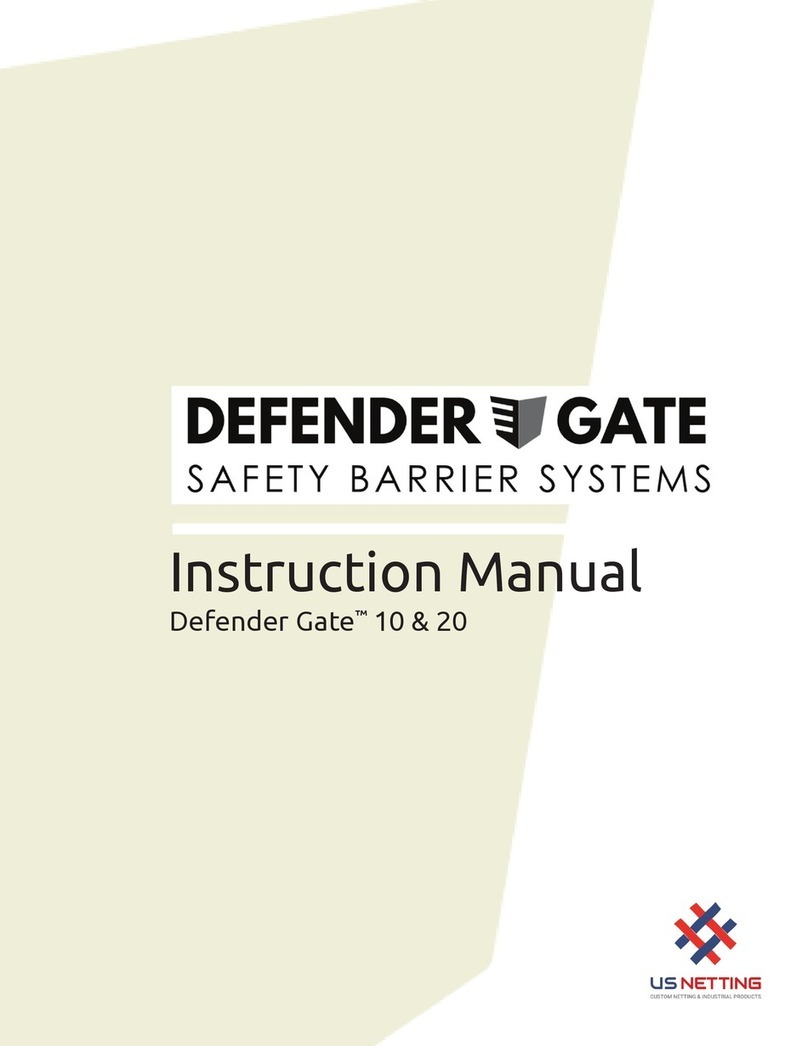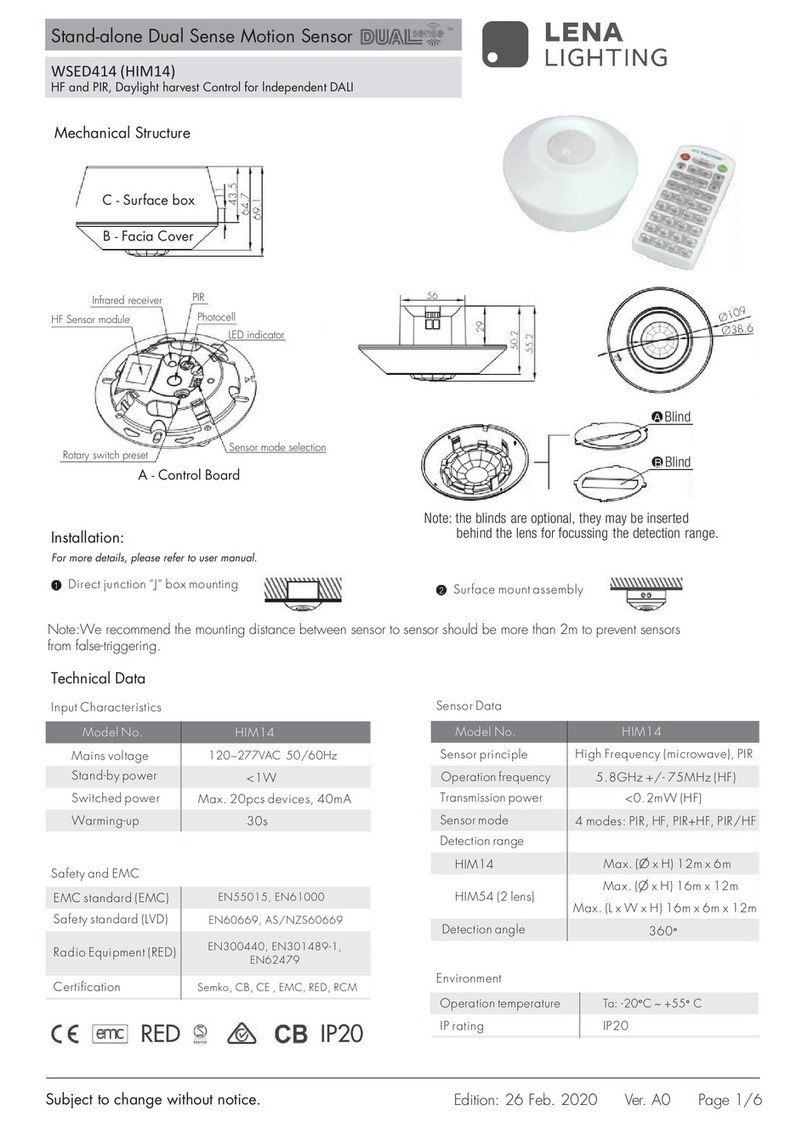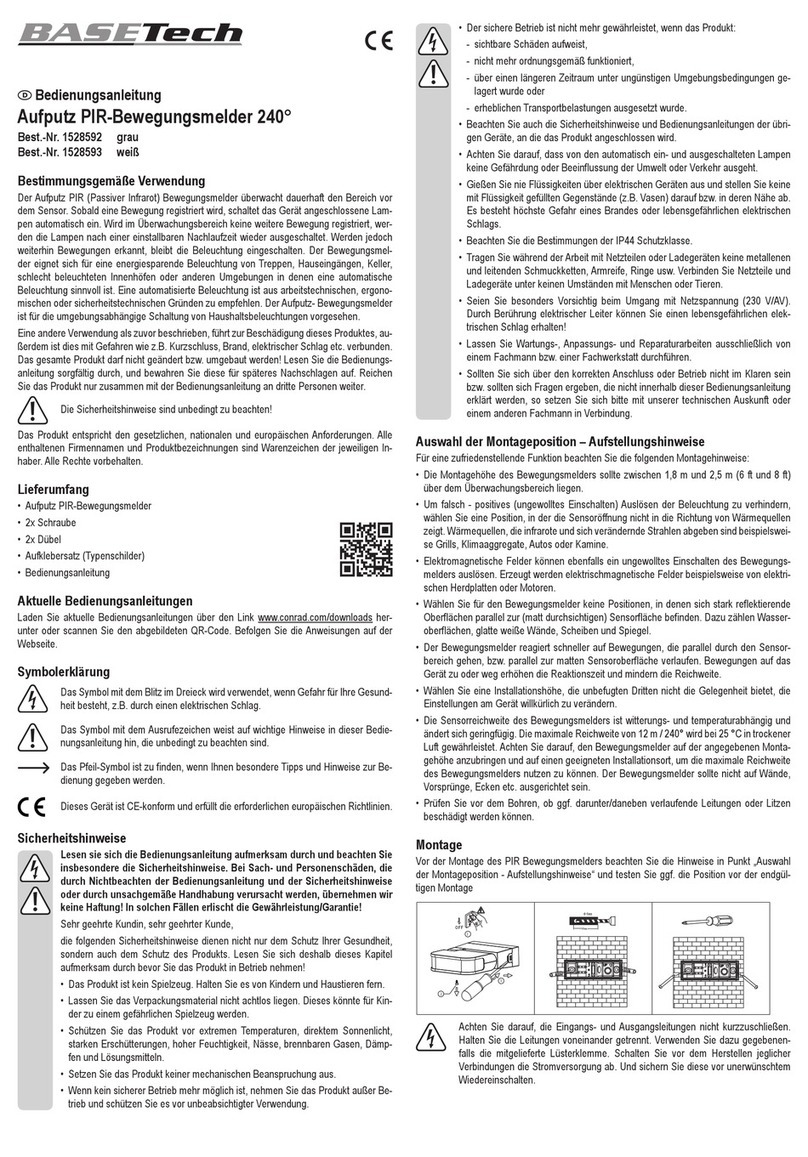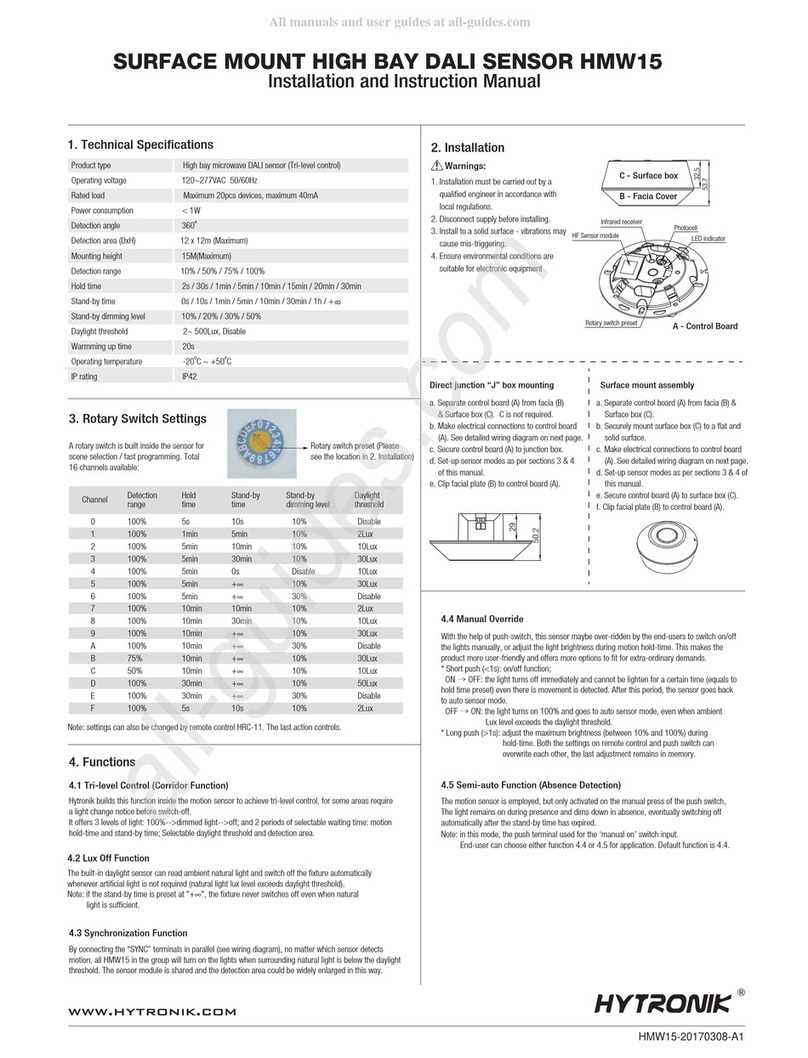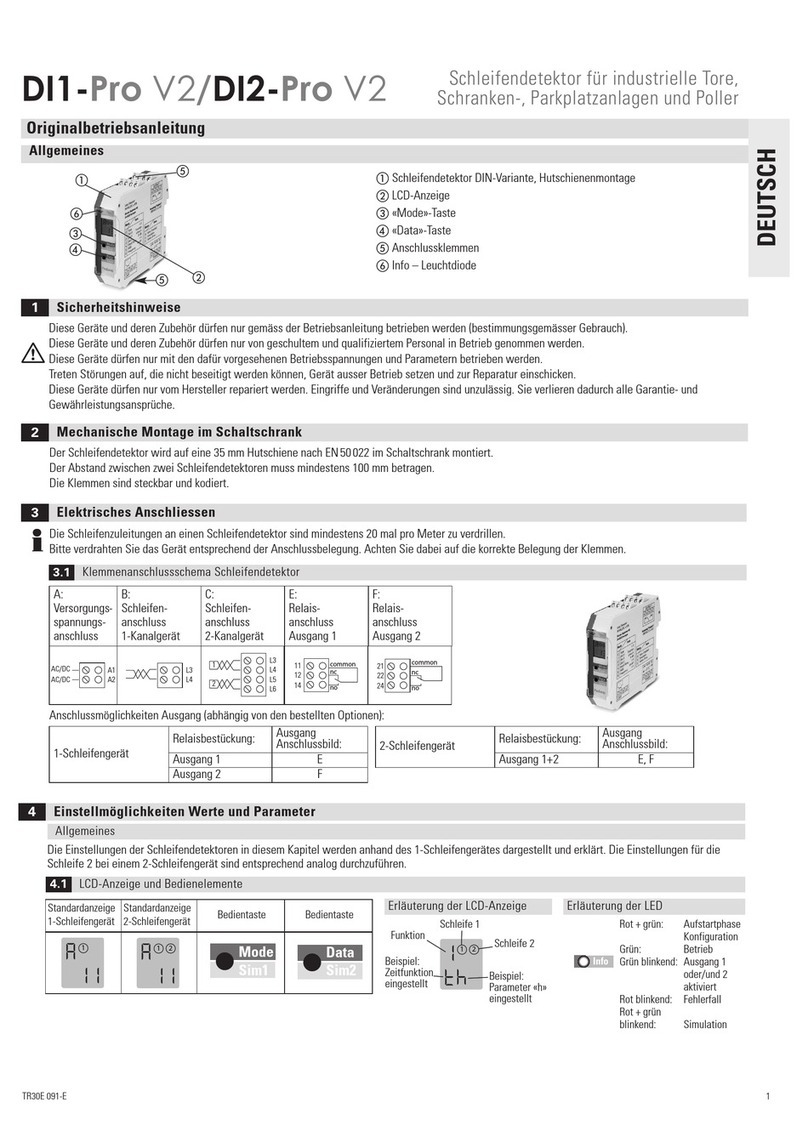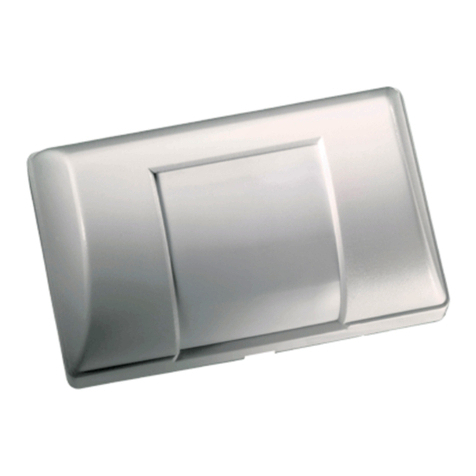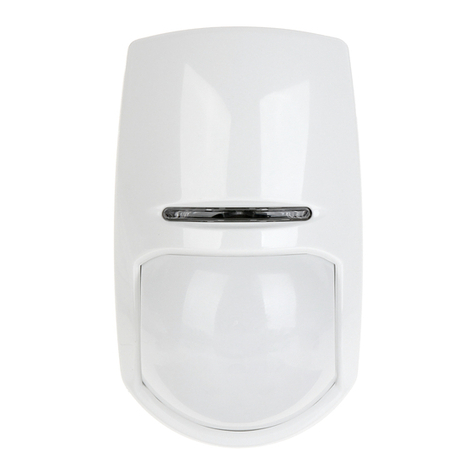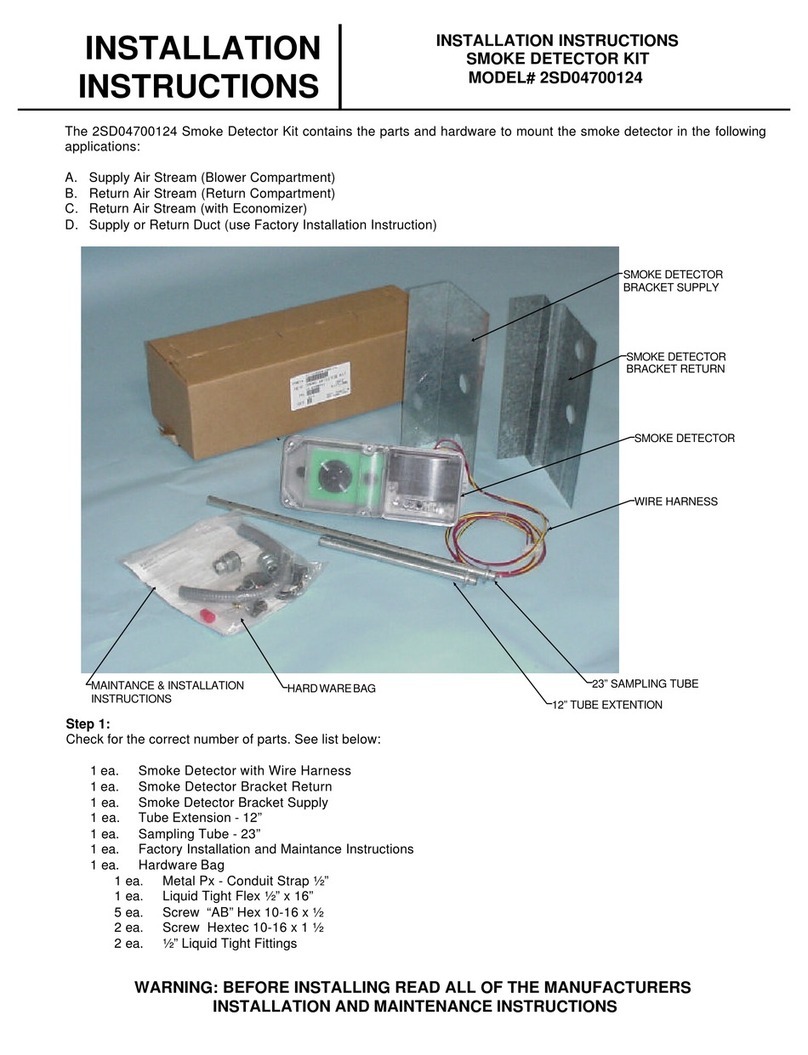PCWI Compact DC12 Service manual

High Voltage
C15 & DC30
POROSITY (HOLIDAY) DETECTORS
D
®
PRECISION INSTRUMENTATION
Complies with the requirements of:
Australian Standard AS3894.1-2002,
ASTM G62-87(1998), NACE RP0274-98,
NACE RP0490-2001, NACE RPO188-99, ASTM D4787-93(1999),
JIS G-3491, JIS G-3492, ANSI/AWWA C214-89,
ANSI/AWWA C213-94 and ISO 2746:1998
Operator’s Handbook
for
Compact
CE Marked PCWI Compact Detectors comply with the requirements
of EMC Directives 89/336/EEC EMC and its amending directives.

PCWI Technology Pty Ltd ABN 96 078 337 354
Postal:
Office:
Phone: (02) 4954 3900
PO Box 900
HUNTER REGION MC
NSW 2310
Fax: (02) 4954 3999
Web:
Email:
www.pcwi.com.au
sales@pcwi.com.au
Intl: +61 2 4954 3900
13 Alhambra Avenue
CARDIFF NSW 2285
Newcastle - Australia
CONTENTS
1.0 Safety Precautions....................................................................2
2.0 Operation ................................................................................3
3.0 Specifications...........................................................................4
4.0 Control Panel Layout .................................................................5
5.0 Voltage Recommendations .....................................................6-7
6.0 Troubleshooting ....................................................................8-9
7.0 Optional Accessories ..........................................................10-11
8.0 Warranty ...............................................................................12
9.0 Service ..............................................................inside back page
Quality
Endorsed
Company
ISO9002
Lic 13066
Quality System
CERTIFICATE OF CALIBRATION
Model : Compact Detector
Manufacturer: PCWI Technology Pty Ltd
Serial No:. ………………..
Tolerance:. ±3%
Note: It is recommended that the unit be periodically checked
prior to use with a Certified PCWI Crestmeter.
SIGNED: ___________________
Laboratory Technician
Conformance: This detector has been tested at a series of voltages from
0 to 60,000 Volts against a PCWI Certified Meter and High
Voltage Probe, Report Number 205928 or Pulse Crest
Meter Report No VM-0085-00 and complies with PCWI
Standards of Manufacture.
PCWI’s Laboratory has also been assessed to AS ISO/IEC
17025-1999 General Requirements for the Competence of
Testing and Calibration Laboratories. All calibrations are
traceable to National and International Standards.

WARNING
This Equipment generates a high voltage and should be used
with care. Please consult these operating instructions before
use.
INTRODUCTION
Thank you for choosing the PCWI Compact for pre-installation and
post installation corrosion detection.
PCWI have designed this instrument with care, to provide ongoing
corrosion detection efficiency under a wide variety of coating
application conditions and to ascertain Porosity for the many protective
coatings currently in use. Under reasonable care in operation, the unit
will provide many years of trouble free detection.
To support the unit, PCWI maintain a comprehensive range of
Electrodes (probes) - extending the versatility of the Compact from
large to small and from accessible to inaccessible surfaces.
PCWI, in a continuing desire to achieve the maximum in corrosion
detection competence, welcomes user enquiries and
recommendations.
Yours sincerely
Paul Van Gaal
1
Compact DC15 and DC30 POROSITY (HOLIDAY) DETECTORS - os
Aug 2002

1.0 SAFETY PRECAUTIONS:
All hand-held high voltage test equipment should be operated
by responsible, trained and authorised personnel.
The Detector output can be up to 35,000 volts. Should the
operator accidentally make contact with the test electrode, they
may experience a mild shock or zap, and in order to avoid this
possibility, the wearing of rubber gloves is recommended.
Furthermore, the operator should enjoy good health and not
suffer from a cardiac condition.
This equipment should only be used for the purpose for which it
was designed, ie: checking the porosity, or electrical
breakdown, of dielectric or insulating materials.
It is also recommended that testing should be carried out well
clear of personnel not involved in the testing procedure, or in
such a position whereby the surprise of receiving an electric
shock could cause a related accident, if for example, tests
being carried out close to moving or rotating machinery, or in
such an unstable position that the operator could fall and injure
themselves.
It is recommended that the operator should have an assistant,
to ensure that unauthorised personnel are kept well clear of the
testing area, and generally assist when necessary with the
testing procedure. It is also recommended that the Detector not
be operated within close proximity of sensitive electronic
apparatus, such as computer equipment.
Do not use the test equipment in any combustible or flammable
atmosphere, as a test voltage can cause an arc or spark to be
generated and an explosion could result.
Always consult the plant or safety officer before carrying out a
test procedure.
When testing tank internals, be certain the tank does not
contain solvents remaining from the painting procedure.
The unit must be earthed to both the item under test and to
ground.
If the operator has a
pacemaker, then they should not use this equipment.
CAUTION
DANGER
2os - Compact DC15 and DC30 POROSITY (HOLIDAY) DETECTORS Aug 2002

Coating Thickness Range
Applied coats should be cured, thickness tested, visually inspected
and accepted – before high voltage porosity testing is carried out.
Coating thickness should be above 150µm; coatings below this
Connect the probe and earth leads to the unit. Connect the earth
clamp to the metallic substrate of the item to be tested –
substrate should be earthed to ground. Select the probe best
suited for the test and attach to the probe handle.
Fit the Fuse (if not already fitted).
Turn the unit on.
Test the batteries to ensure that they are charged.
Turn the voltage control clockwise to the required test voltage.
Place the probe near the metal substrate.
A spark should occur (if not re-check all leads and connections).
The unit should now be ready for use.
Re-check the output – adjust if necessary.
Place the probe on the coated surface and move at
approximately one metre per four seconds.
A spark at the probe – this can usually be seen and heard.
A light flashes on the front panel of the unit.
An audible sound – buzzer is mounted inside the unit.
Digital test voltage drops drastically.
The neon in the probe flashes.
Alarm sensitivity can be adjusted to suit after locating a flaw.
thickness should be tested with a wet sponge unit.
Note: If the neon is in place allow an additional 200v.
A fault is indicated by:
Note
2.0 OPERATION
:A definite flaw should be made in the coating and located with the
designated test voltage, therefore proving that the unit is locating
the type of fault you wish to find.
Probes must be kept in full contact with the surface, gaps in or
between the probe and the coating may result in flaws going
undetected.
Wire brushes, rubber and coil spring probes should all be kept in
good condition.
Probes other than fine wire brushes may require higher voltages.
(see also troubleshooting pages).
Wet and contaminated coatings should not be tested until dry
and clean
3
Compact DC15 and DC30 POROSITY (HOLIDAY) DETECTORS - os
Aug 2002

Earthing
Leads
3.0 SPECIFICATIONS
STORAGE:
Where the item to be tested is not earthed to ground, a ground spike
be attached.
The unit should always be switched off before removing and
repositioning the earth lead. After the earth is repositioned, the
probe should always be flashed on the substrate to prove a good
contact has been made.
Carbon cored 22k High Voltage leads be used.
Use of copper cored leads will void warranty.
Weight: 2.2kg
Display: LCD 3¾ digits with battery indicator
Voltage 0 to: DC15:15kv DC30: 30kv
Resolution: 10v 100v
Short circuit: Test current less than 0.5mA
Power supply: 3Ah Slide-off
Recharge Time: 400mA for 10hrs.
Battery Test: When Porosity (Holiday) Detector is switched on, the
result is displayed on the LCD.
Dimensions: 260 x 160 x 70mm
Alarms: Audible – with sensitivity adjustment.
Visual – front panel light.
Neon in probe – 360° visibility
Probe lead: 2m carbon-cored high-voltage silicon-rubber.
Earth lead: 7m with a clamp fitted to one end.
Probes: 250mm Flat Brass Wire brush, trim length of 50mm
Carry Case: 130 x 355 x 465mm
Optional coils & brushes available: See accessories pages
The Detector should be stored in a dry place. Leads should not be
wound tightly. Battery should be fully charged.
must
mustW
4os - Compact DC15 and DC30 POROSITY (HOLIDAY) DETECTORS Aug 2002

13
8
10
9
11 12
7
FUSE
T
1.6A
250V
High Voltage
Porosity Detector
ON
ALARM
Sensitivity
Voltage
OFF
Test
2
3
1
5
4
6
29.00
Batt
kV
E
F
29.00
Batt
kV
E
F
4.0 CONTROL PANEL LAYOUT
Probe Handle Diagram
Carbon Cored Lead “O” Rings
Screw Fitting
Neon
Lock Nut
End Cap
Neon Holder
Screw
Probe Handle Washer
Spring
1 LCD display (including battery condition
indicator)
2 Voltage control (10 turn)
3 Visual alarm indicates when fault is found
4 On switch
5 Off/test switch
6 Sensitivity control for the alarm
7 Audible alarm when fault is found
8 High Voltage probe connector
9 Fuse (1.6A slow blow) 5 x 20mm
10 Earth connection point
11 Charge connector – allows operation while
charging is in progress
12 Slide-off power pack
13 Earphone jack
5
Compact DC15 and DC30 POROSITY (HOLIDAY) DETECTORS - os
Aug 2002

Table 1. Suggested for High Voltage Spark Testing
Total Dry Film Thickness Suggested
Inspection
(µm) (mils) (V)
200 to 280 8 to 11 1,500
300 to 380 12 to 15 2,000
400 to 500 16 to 20 2,500
530 to 1,000 21 to 40 3,000
1,010 to 1,390 41 to 55 4,000
1,420 to 2,000 56 to 80 6,000
2,060 to 3,180 81 to 125 10,000
3,200 to 4,700 126 to 185 15,000
The above table should be taken as a GUIDE only. It is
recommended that the whole of this standard be used.
Table 1 below is derived from NACE standards and should be
used as a guide only.
5.0 Voltage Recommendations
International Standards
NACE RP0188-99 derived table
New Protective Coatings
on Conductive Substrates
ALLOW AN ADDITIONAL 200 VOLTS IF THE NEON IN THE PROBE HANDLE IS IN USE.
6os - Compact DC15 and DC30 POROSITY (HOLIDAY) DETECTORS Aug 2002

Table 2. kV Values from
NACE RP0490-2001
mm kiloVolts
0.250 1.650
0.280 1.750
0.300 1.800
0.330 1.900
0.360 1.950
0.380 2.050
0.410 2.100
0.510 2.350
0.640 2.650
0.760 2.900
Table 3. kV Values from
NACE RP0274-98
mm kiloVolts
0.51 6
0.79 7
1.6 10
2.4 12
3.2 14
4.0 16
4.8 17
13 28
16 31
19 34
The above tables should be taken as a GUIDE only. It is
recommended that the whole of this standard be used.
International Standards
NACE RP0490-2001 and RP0274-98 derived tables
Tables 2 & 3 below are derived from NACE standards and should
be used as a guide only.
Thin Film Pipeline
Coatings (FBE)
General Pipeline
Coatings
ALLOW AN ADDITIONAL 200 VOLTS IF THE NEON IN THE PROBE HANDLE IS IN USE.
7
Compact DC15 and DC30 POROSITY (HOLIDAY) DETECTORS - os
Aug 2002

HV Lead
Neon
Holder
18to22kresistance
W
6.0 TROUBLESHOOTING
In order to ensure that your Compact Porosity Detector is operating to
specification, the Detector handle and lead should be checked prior to use.
Use the following procedure:
Unscrew the neon holder from the handle.
Using a multi-meter, complete the circuit and check the resistance at both the
handle and the high voltage plug .
If resistance is outside the 18,000 to 22,000 ohm range, or is open circuit:
(a) Check and for either poor connection or damage;
(b) Check for break or damage to the HV lead .
Replace/rectify connection and leads and then re-test.
ÊË
ÊË
Ì
8os - Compact DC15 and DC30 POROSITY (HOLIDAY) DETECTORS Aug 2002

Symptom Cause Solution
No Display
Flat battery
No Power - fuse not fitted
Recharge battery
Fit fuse
Displayshows-1 Voltage higher than display capacity Decrease voltage
Display erratically
shows -1 Display drops to -1 when fault found Normal operation
Display voltage
drops during test
Slightly conductive, damp or salty
surface
Coating may not be fully cured
Probe surface area too large
Wash and clean the surface
Allow coating to cure
Use a smaller probe, or increase
voltage
Blackening
Display Poor Earthing Make positive earth connections
Alarm sounds
continuously
during test
Slightly conductive, damp or salty
surface
Coating may not be fully cured
Probe moved too fast
Probe surface area too great
Wash and clean the surface
Allow coating to cure.
Move probe 1 metre every 4 seconds
Use smaller probe
No alarm on fault
Sensitivity adjusted at too low a
setting
Voltage set too low
Increase sensitivity
Increase voltage
No spark at
probe tip
Neon in handle damaged
Damaged leads
Poor connections
Flat Battery
Replace neon (or use a metal
conductor piece)
Repair or replace leads
Clean and reconnect
Recharge battery
Probe voltage
lower than display
voltage
Neon in handle can use up to 200
volts
Damaged HV lead
Poor Earth connection
Turn up voltage control to
compensate for neon
Replace lead
Check all connections
9
Compact DC15 and DC30 POROSITY (HOLIDAY) DETECTORS - os
Aug 2002

7.0 OPTIONAL DETECTOR ACCESSORIES
Crest Meters Certification&.
50mm (2in) to 600mm (24in) wide
25mm (1in) to 500mm (20in) Spiral wound and Disc
.
25mm (1in) to 500mm (20in) .
flat brushes.
Internal
circular pipeline brushes
External circular pipeline brushes
10 os - Compact DC15 and DC30 POROSITY (HOLIDAY) DETECTORS Aug 2002

60mm, 125mm, 200mm, 450mm for flat or external
pipeline brushes.
connectors
Fan Brushes
450mm covered .probe extensions
Spare slip-out
7m with clamp.
8m trailing Earth lead (1m plastic encased).
Spare and neons.
power packs.
Earth lead
neon light holders
50mm (2in) to 1210mm (48in) complete with ball bearing
ends.
Coil Joiners.
Coils
11
Compact DC15 and DC30 POROSITY (HOLIDAY) DETECTORS - os
Aug 2002

8.0 WARRANTY
Subject to the warranty conditions below this PCWI Instrument is warranted by PCWI
International Pty Ltd to be free from defects arising from faulty design, material, or
workmanship for a period of 12 months from the date of original purchase by the user or a
maximum period of 15 months from dispatch ex PCWI Australia.
Probes and leads are warranted for 3 months. They are consumable items, and subject to
wear and deterioration during use. The life of these parts can be much extended by
keeping them in a dry clean condition, and storing them in suitable protective containers.
During use, avoid “scrubbing” the probe along the surface of the work-piece.
During the warranty period listed above PCWI or it’s authorized service representative will
make good any defects covered by this warranty.
PCWI or it’s authorised service representative will decide if there are any defects in
design, material or workmanship.
This warranty only applies provided the instrument has been used in accordance with the
manufacturers operating handbook recommendations.
This warranty does not cover damage, malfunction or failure resulting from misuse,
neglect, abuse or used for a purpose for which it was not designed and no repairs,
alterations or modifications have been attempted by other than PCWI on an authorized
service.
This warranty applies only to the original user buyer.
This warranty does not cover any service that is needed after an accident, alterations,
misuse, fire or floods.
This warranty is the only one given by PCWI and no one has the authority to change, or
add to, the obligations and liabilities listed in it.
This warranty does not cover batteries, probe handle brushes (electrodes) and leads
which are subject to wear.
During the warranty period PCWI or its authorized service representative will bear the
transportation cost of the return of instrument/s repaired under warranty back to the
users premises within the country of purchase.
Defective goods must be returned to PCWI or an authorized service representative at the
Purchaser’s expense. The goods must be accompanied by the Purchaser’s written order
describing the defect and authorising PCWI or its authorized service representative to
invoice the Purchaser for any charges not covered by the warranty.
The purchasers order must also include the model and serial numbers of the instrument
and address of the distributor and date of purchase.
Upon receipt at the service point the instrument will be examined to determine the nature
and cause of the defect.
If the defect is covered by the warranty, a repair will be effected at PCWI’s or authorized
service representative expense. If the defect is not covered by the warranty, PCWI or
authorized service representative will quote the Purchaser for a replacement or repair,
and will not proceed until written acceptance of the quotation is received.
WARRANTY CONDITIONS
HOW TO MAKE A WARRANTY CLAIM
12 os - Compact DC15 and DC30 POROSITY (HOLIDAY) DETECTORS Aug 2002

9.0 SERVICE AND MAINTENANCE
AUTHORISED SERVICE REPRESENTATIVE
CARE AND MAINTENANCE
SERVICE REPAIRS AND MAINTENANCE
BEFORE YOU CALL FOR SERVICE
To enable speedy “return to service” whether under warranty or otherwise, PCWI have
appointed your distributor as a service centre and have provided all relevant information
and recommended parts to be carried to assist distributor’s technical staff carry out this
essential part of the PCWI customer service.
This equipment is protected against hostile environments and is designed for prolonged
use in the field without any special maintenance, other than routine battery recharging.
However, the equipment is not totally sealed and appropriate precautions should be
taken. Remember, it is a precision electronic instrument and should be treated as such.
There are no internal user controls.
The equipment should only be operated by qualified personnel.
Some organic materials may attack plastic parts and cause early degradation. Contact
with such materials should be avoided.
Do not operate damaged equipment.
Where the power supply is derived from internally mounted rechargeable cells and
disassembly of the unit is necessary to access those batteries,
.
Repairs not covered by the warranty or carried out after the warranty period, will be
charged at the current hourly or set service rate, plus the cost of materials.
Goods for repair must be sent at the Purchaser’s expense, and be accompanied by the
Purchaser’s written order describing the defect and authorising PCWI to invoice the
purchaser for labour, materials and return delivery cost.
Read the section on “troubleshooting” in this handbook and check the symptom, cause
and solution before you call for service.
this action would void
all warranty
No service or repair will be undertaken until a written order is received.
AUTHORISED SERVICE AGENT:

os - PCWI Compact DC15 and DC30 Porosity Detectors.cdr (Sep 2002)
©2002 PCWI Pty Ltd
PCWI
OFFERS
PCWI
Postal:
Office:
PO Box 900
HUNTER REGION MC NSW 2310
13 Alhambra Avenue
CARDIFF NSW 2285
Newcastle, Australia
Strong technical support
Market and product knowledge
NATA registered laboratory in metrology
Quality systems certified to ISO9002
Warranties and after sales service
Instrument Buyers Directory
In-house development and manufacturing enables us to provide strong
technical support and a quick response to enquiries and orders.
We understand technical specifications demanded by industry and
recognise customer requirements are specific in relation to testing and
measuring instruments.
PCWI’s in-house laboratory can support testing for a range of instruments
enabling Certification Traceable to National Standards.
PCWI’s Quality Management System is certified to ISO9002.
PCWI provides 12 months warranty for its Detectors with detailed operator
instruction handbooks and after sales service. An extension of this PCWI
service is provided by your local distributor.
For your free copy of our Annual Buyers Directory of Industrial Test &
Measuring Instruments please see contact details below.
Phone:
Fax: +61 2 4954 3999
www:
Email:
www.pcwi.com.au
sales pcwi.com.au
@
+61 2 4954 3900
This manual suits for next models
1
Table of contents
Other PCWI Security Sensor manuals
Popular Security Sensor manuals by other brands
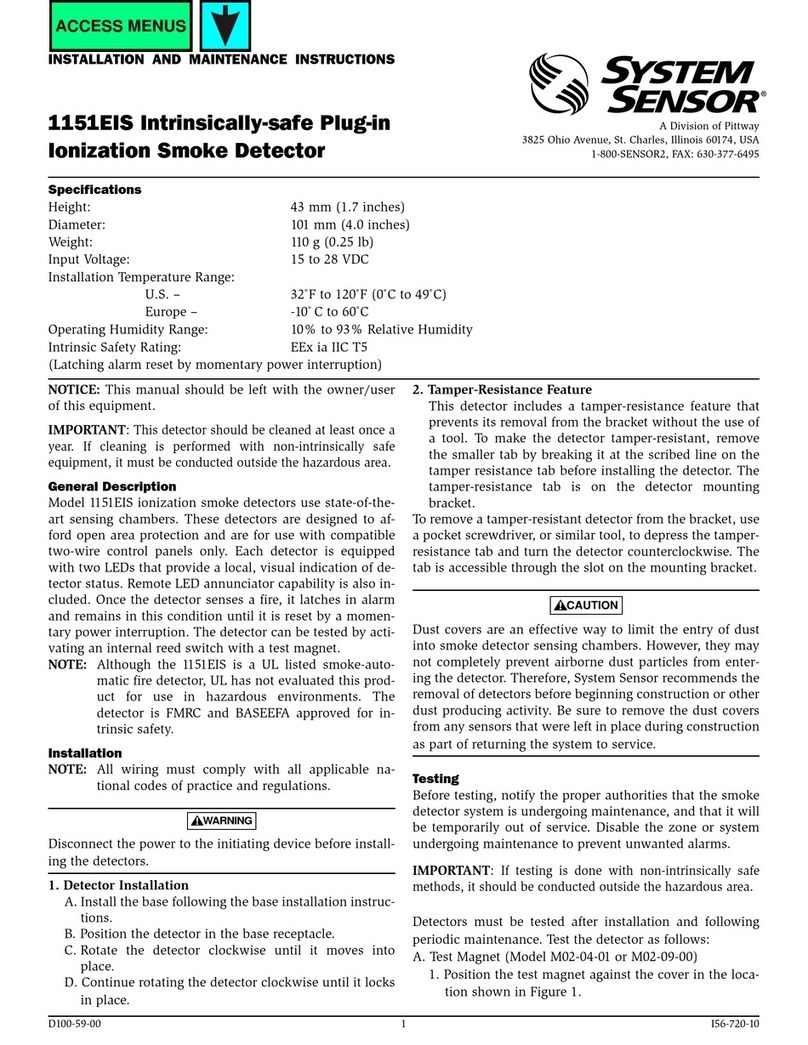
Pittway
Pittway SYSTEM SENSOR 1151EIS Installation and maintenance instructions

FORTEZA
FORTEZA Forteza-50 Description Manual & Service Instruction
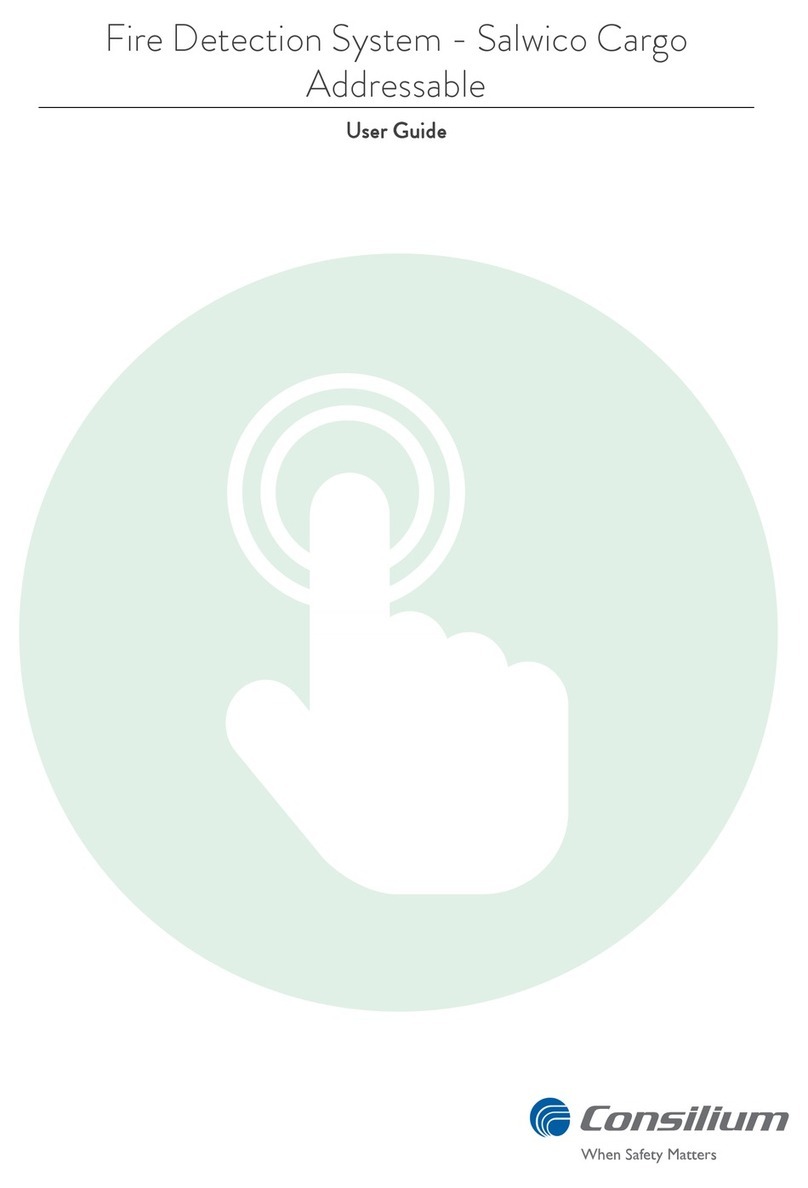
Consilium
Consilium Salwico Cargo user guide
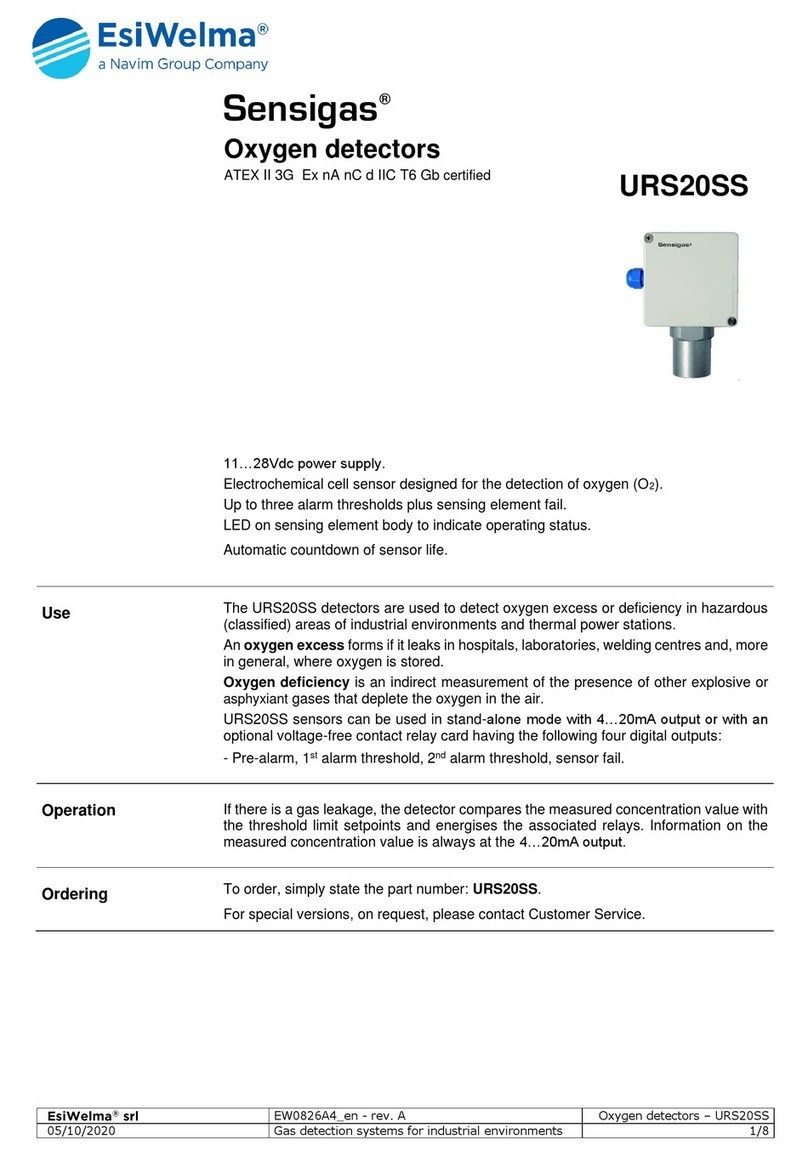
Navim Group Company
Navim Group Company EsiWelma Sensigas URS20SS quick start guide

AQUALEAK
AQUALEAK WG1 Installation and operation instruction manual

Ametek
Ametek LAND MILLWATCH user guide
